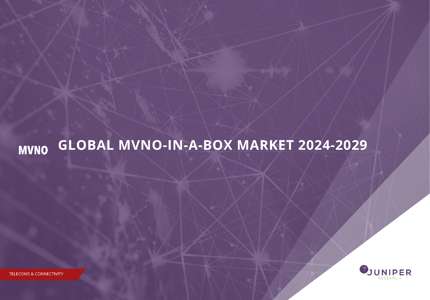Why Revolut, N26, Nubank and Other Fintechs Are Launching MVNOs
In late April 2025, both Revolut and N26, two major fintechs, announced their plans to launch a Mobile Virtual Network Operator (MVNO). Revolut is a neobank with more than 52 million users; operating in more than 48 countries. The neobank has announced that it would initially roll-out its MVNO services in the UK and Germany, with later launches in further European markets. Its monthly mobile plans will offer unlimited calls, texts, and data at home, and a 20GB roaming allowance across Europe and the US. German subscribers will benefit from an even larger 40GB EU roaming allowance.
Revolut has stated that it aims to attract customers upset by rising roaming costs, outdated user experiences, hidden fees, and the inflexibility of mobile service contracts. It follows on the company’s success in launching its own eSIM product, which Revolut says shows “mobile offerings are ripe for disruption”.
N26, a German neobank which processes more than €140 billion ($158.5 billion) in transactions each year, also announced its intention to launch an MVNO in Germany in April 2025. The neobank stated that it aims to change the high cost of its mobile service in Germany which it places at around €50 ($56.14) per month. N26 will leverage eSIM and online-only sales channels, but is yet to disclose details relating to its tariffs, data volumes and pricing, as well as whether existing customers will receive special bundles.
The announcements by Revolut and N26 follow those from many other major neobanks and fintechs; with Nubank, a Latin American neobank with more than 114 million customers, notably announcing its own MVNO NuCel, in October 2024. NuCel offers customers flexible plans available via eSIM; seeking to eliminate complexities and ensure transparency.
Further announcements of mobile offerings by neobanks and fintechs include Global Money Express, and Viva Republica, and Juniper Research notes that there is a large number of traditional financial firms also interested in the MVNO market. For example, major banks such as KB Kookmin Bank, Capitec Bank, Standard Bank, and Old Mutual Banking Group have all launched MVNOs.
Why Now?
With a large number of neobanks, fintechs, and other financial service providers entering or exploring the MVNO market, it is reasonable to question why. When launching their MVNOs, neobanks and fintechs typically describe the mobile services market as ripe for disruption, with a lack of flexibility and transparency often cited as key issues which their services will address. Due to these issues, neobanks and fintechs believe they have the opportunity to enter the MVNO market.
However, concerns about flexibility and transparency are not new to the market, and neobanks and fintechs have not shown the same level of interest in the market in previous years. this can be argued to be due to neobanks and fintechs focusing on their core services, this point is undermined by the growth in traditional financial firms’ interest in MVNOs who have long established business models and operations.
We believe that a key factor which is allowing neobanks and fintechs to launch MVNOs now is the decline in barriers to entry for the MVNO market. The development of MVNO-in-a-Box offerings has taken off in recent years, with these services having significantly reduced the costs of launching an MVNO and the expertise required to enter the market. MVNO-in-a-Box allows enterprises to outsource the technical operations of launching an MVNO; with the enterprise only needing to focus on areas such as marketing and integrations with their existing business.
Likewise, the length of time to launch an MVNO has continued to decline, with many services now allowing an MVNO to be launched in two to three months. This means that the roll-out of MVNO services can now meet the agile expansion and aggressive approach of neobanks and fintechs; ensuring that MVNO operations can more closely align with their business philosophy.
Moreover, the MVNO market is increasingly trending towards a digital-only model, with MVNOs now able to operate entirely digitally. In particular, the rise of eSIMs has eliminated the need for physical SIM distribution systems, with markets such as Germany and the UK seeing eSIM penetration in smartphones exceed 60% in 2025. This lends itself strongly to the business model of those neobanks and other fintechs who take a digital-only approach to banking or financial operations.
What Are the Benefits for Neobanks and Fintechs?
Entering the MVNO market provides a host of benefits, the first of which is revenue diversification. Providing mobile services offers neobanks and fintechs a recurring source of revenue outside of financial services; allowing them to continue to increase their average revenue per user. However, revenue diversification is not the only major benefit of launching an MVNO.
Neobanks and fintechs are well positioned to monetise MVNO services, as their customer demographics align well with those of a typical MVNO. Both skew towards younger demographics, with these younger demographics being attracted to the flexibility and affordability of both neobanks and MVNOs. As a result, neobanks and fintechs are well positioned to sell mobile subscriptions to their existing customer bases.
Launching an MVNO increases the stickiness of neobanks’ and fintechs’ core offerings; with the integration of mobile services with their financial services making consumers more dependent on the enterprise, and thus less likely to switch. Whilst the focus on flexibility will somewhat undermine the traditional stickiness of mobile subscriptions, this will still ensure that their core financial products are stickier. Essentially, customers will be less likely to change banks if it affects their mobile subscription as well.
Neobank and fintech markets are highly competitive, with neobanks battling to gain market share from more traditional vendors. As such, neobanks want to make their proposition more compelling, with the addition of an MVNO service being one way to increase the value of customer relationships. Additional revenue streams will also ease neobank paths to profitability, which are of critical importance.
To maximise the value of adding MVNO services, it is critical that neobanks and fintechs effectively integrate their MVNO services with existing rewards and benefits schemes. For example, Revolut has already announced it would allow customers to pay for their mobile subscription using RevPoints. This integration will enhance the benefits of using both services simultaneously; increasing the value of the neobank’s or fintech’s offering.
Will These Offerings Be Successful?
It's likely that neobanks and fintechs such as Revolut and Nubank will be successful in the MVNO market, with their data plans being at competitive market rates. The business models of neobanks and fintechs also align well with typical MVNO customer bases. As a result, neobanks’ existing customer bases are likely to find an MVNO offering attractive; meaning the addition of MVNO services aligns well with neobanks’ core business.
However, it is important to consider that MVNOs frequently top rankings for customer satisfaction in markets such as the UK. Consequentially, neobanks and fintechs will not only need to offer their customers flexibility and benefits, but have top-of-the-line customer service operations, with customers expecting high levels of care.
So, the questions begs: are we seeing a wider transformation of the MVNO market?
In short, yes. Due to the declining barriers to entry to the MVNO market, enterprises across a wide array of industries have begun to explore the launch of their own mobile service. For example, in the past few months, the UK has seen Octopus Energy actively explore the launch of its own MVNO, while football team Millwall launched its own mobile subscription in March 2025.
As a result, there will be significant disruption to the MVNO market over the next two years, as enterprises try their hand at launching their own MVNO service. This will increase competition and flexibility in the market, with consumers gaining access to a host of new MVNO services. However, increased competition brings increased risk, so not all MVNO projects are likely to be successful.
Alex is a Senior Research Analyst within Juniper Research’s Telecoms & Connectivity team, focusing on the latest developments in operator and telecommunications markets. His recent reports have covered topics such as AI in Cellular Networks, International Roaming Corridors, and OTT Business Messaging.
Latest research, whitepapers & press releases
-
 ReportDecember 2025
ReportDecember 2025AI Agents for Customer Experience Platforms Market: 2025-2030
Our comprehensive AI Agents for Customer Experience Platforms research suite comprises detailed assessment of a market that is set to disrupt mobile communications. It provides stakeholders with insight into the key opportunities within the AI agents for customer experience platforms market over the next two years.
VIEW -
 ReportDecember 2025Fintech & Payments
ReportDecember 2025Fintech & PaymentseCommerce Fraud Prevention Market: 2025-2030
Our eCommerce Fraud Prevention research suite provides a detailed and insightful analysis of this evolving market; enabling stakeholders from financial institutions, law enforcement agencies, regulatory bodies and technology vendors to understand future growth, key trends, and the competitive environment.
VIEW -
 ReportNovember 2025Telecoms & Connectivity
ReportNovember 2025Telecoms & ConnectivityeSIMs & iSIMs Market: 2025-2030
Juniper Research’s eSIMs and iSIMs research suite offers insightful analysis of a market set to experience significant growth in the next five years. The research suite provides mobile network operators (MNOs), original equipment manufacturers (OEMs), and eSIM management and platforms vendors with intelligence on how to capitalise on the market growth, and guidance on how eSIM-only devices and sensors, SGP.42, in-factory provisioning, and iSIMs will change the competitive landscape.
VIEW -
 ReportNovember 2025Fintech & Payments
ReportNovember 2025Fintech & PaymentsModern Card Issuing Platforms Market: 2025-2030
Our Modern Card Issuing Platforms Market research suite provides a detailed and insightful analysis of this evolving market; enabling stakeholders from banks, financial institutions, fintech companies, and technology vendors to understand future growth, key trends, and the competitive environment.
VIEW -
 ReportNovember 2025Fintech & Payments
ReportNovember 2025Fintech & PaymentsDigital Wallets Market: 2025-2030
Our digital wallets research suite provides detailed analysis of this rapidly changing market; allowing digital wallet providers to gain an understanding of key payment trends and challenges, potential growth opportunities, and the competitive environment.
VIEW -
 ReportOctober 2025Fintech & Payments
ReportOctober 2025Fintech & PaymentsDigital Identity Market: 2025-2030
Juniper Research’s Digital Identity research suite provides a comprehensive and insightful analysis of this market; enabling stakeholders, including digital identity platform providers, digital identity verification providers, government agencies, banks, and many others, to understand future growth, key trends, and the competitive environment.
VIEW
-
 WhitepaperDecember 2025Telecoms & Connectivity
WhitepaperDecember 2025Telecoms & ConnectivityHuman + AI: Drivers of Customer Experience AI Agents in 2026
Our complimentary whitepaper, Human + AI: Drivers of Customer Experience AI Agents in 2026, examines the key drivers of the AI agents for customer experience platforms market in 2025.
VIEW -
 WhitepaperDecember 2025Fintech & Payments
WhitepaperDecember 2025Fintech & PaymentsBeyond Chargebacks: The True Cost of Fraud for Digital Commerce
Our complimentary whitepaper, Beyond Chargebacks: The True Cost of Fraud for Digital Commerce, examines the state of the eCommerce fraud prevention market; considering the impact of evolving digital fraud strategies, including key trends such as identity theft, account takeovers, chargebacks, policy abuse and friendly fraud.
VIEW -
 WhitepaperNovember 2025Telecoms & Connectivity
WhitepaperNovember 2025Telecoms & ConnectivityeSIM-only Devices: The Impact on Operators, Consumers, and IoT
Our complimentary whitepaper, eSIM-only Devices: The Impact on Operators, Consumers, and IoT, explores the challenges and opportunities for the three segments, with a particular focus on eSIM-only smartphones and SGP.42.
VIEW -
 WhitepaperNovember 2025Fintech & Payments
WhitepaperNovember 2025Fintech & PaymentsUnlocking the Next Stage of Growth for Modern Card Issuing Platforms
This free whitepaper analyses key trends shaping the modern card issuing space, and the ways in which modern card issuing platforms can capture growth.
VIEW -
 WhitepaperNovember 2025Fintech & Payments
WhitepaperNovember 2025Fintech & PaymentsTop 10 Fintech & Payments Trends 2026
Fintech is evolving fast. From stablecoins to agentic AI, our annual guide reveals the shifts redefining payments, digital identity, and the future of money in 2026. Download your copy today.
VIEW -
 WhitepaperNovember 2025Fintech & Payments
WhitepaperNovember 2025Fintech & PaymentsDigital Wallets: Empowering Financial Inclusivity
Our complimentary whitepaper, Digital Wallets: Empowering Financial Inclusivity, examines the state of the digital wallets market; considering the impact of digital wallets on different geographies, how they are shaping the modern payments landscape through lower transaction fees and promoting financial inclusivity for underbanked populations, and how they are competing with established payment methods.
VIEW
-
IoT & Emerging Technology
Juniper Research Unveils Top 10 Emerging Tech Trends to Watch in 2026
January 2026 -
Fintech & Payments
Digital Identity App Usage to Hit 6.2 Billion by 2030, Driven by Shift to Decentralised Models
December 2025 -
Telecoms & Connectivity
Travel eSIM Margins Under Pressure as Revenue per Gigabyte Falls 10% Globally in Two Years
December 2025 -
Telecoms & Connectivity
AI Agents to Power 1,000% More Customer Interactions for Enterprises Globally by 2027
December 2025 -
IoT & Emerging Technology
Global D2C Revenue Set for $370 Million Surge, But Satellite Operators Should Not Chase Full MNO Status
December 2025 -
Fintech & Payments
Digital Goods Fraud to Cost eCommerce Merchants $27 Billion Globally by 2030 as AI Tools Accelerate Attacks
December 2025
























